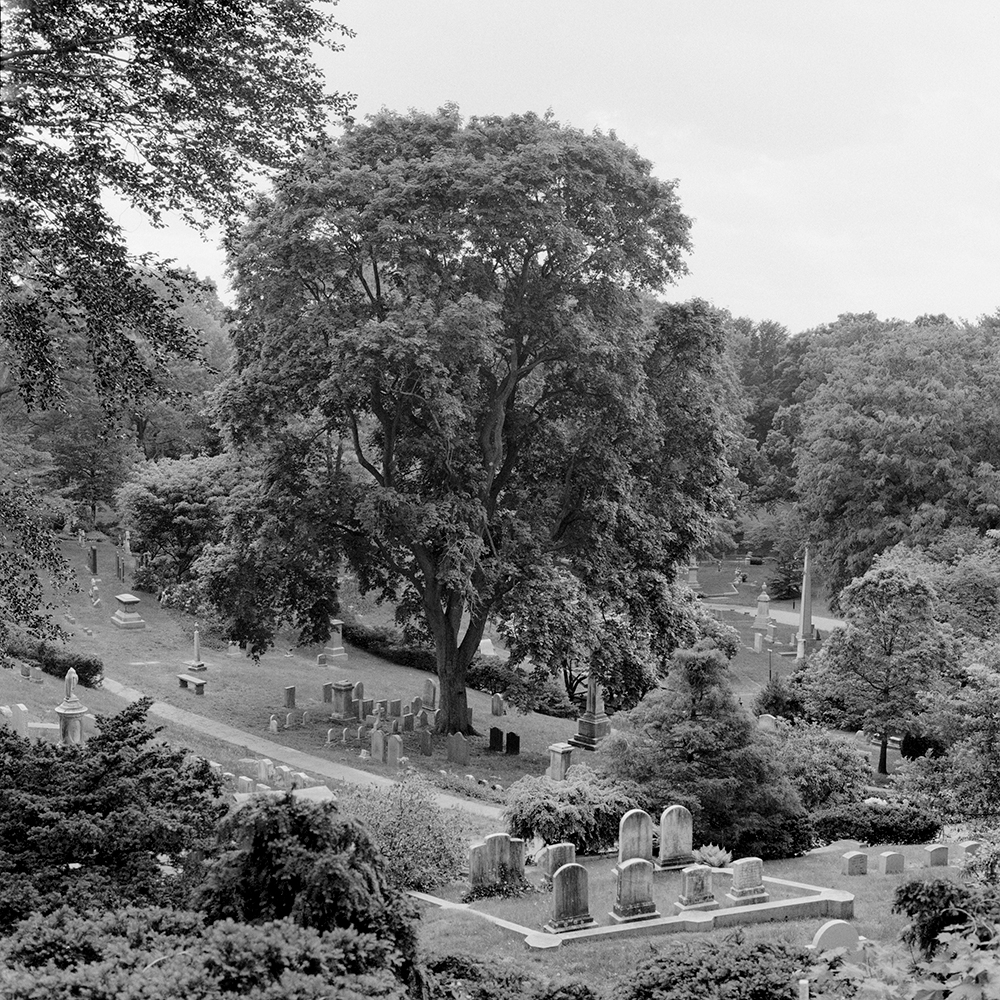
On a hilly seventy-acre site four miles west of Boston, a new cemetery, unlike any in America, was consecrated in 1831. Derived from the picturesque English landscape garden, Mount Auburn also reflected the influence of Père Lachaise Cemetery, whose melancholic, romantic atmosphere was already attracting crowds in Paris. The idea for a new burial ground had originated with Jacob Bigelow, an eminent Boston physician and self-taught architect, who held a benign, naturalistic view of death. Bigelow had no trouble finding a group of like-minded Bostonians, and by 1825, the Massachusetts Horticultural Society acquired a parcel of farmland known as “Sweet Auburn” for this purpose. The plan that transformed the rolling land into a cemetery was drawn in 1831 according to a design by General Henry A. S. Dearborn, president and founder of the Massachusetts Horticultural Society and the Garden and Cemetery Committee.
The group’s goal was to create a sylvan, picturesque landscape that would also serve as final resting place for Boston citizens and a setting to inspire philosophical reflection. Their design judiciously thinned existing stands of trees and laid out a system of roads using ellipses and parabolas derived from Greek architecture, introducing flower and shrub borders with an eye to maintaining the picturesque quality of the whole. Mount Auburn’s forest glades and ponds contrasted sharply with grim American graveyards typical of the day, and prosperous Bostonians lost no time in buying space there. The “Garden of Graves” also drew birdwatchers and nature lovers, among them Ralph Waldo Emerson and Margaret Fuller, who found transcendental inspiration among the shady groves. Some city visitors sought more active recreation at Mount Auburn; restrictions were eventually adopted to keep horseback riders off the graves.

During Mount Auburn’s first decade, most of the cemetery’s tombs and monuments were designed in the neoclassical style, whose forms showed to good advantage in the wooded landscape. Marble obelisks, suggesting the purity of souls bound for heaven and the assurance of salvation, were especially popular. As the century progressed, the style of both landscape and monuments evolved. By midcentury, the Gothic had taken precedence over the neoclassical. An interest in the “lawn plan,” first made famous by Spring Grove Cemetery in Cincinnati, led to removal of trees, resulting in expanded areas of turf. Gardenesque taste for rare horticultural specimens led to the planting of many unusual, weeping varieties.
In the twentieth century, changing technologies further transformed the cemetery. Advances in grading, hydraulics, and maintenance, for example, resulted in smooth banks and geometric bodies of water. Oakes Ingalls Ames, cemetery president from 1934 to 1964, planted a great number of ornamental trees, and today the cemetery is recognized as an important arboretum. Many layers of stylistic influence shaped Mount Auburn Cemetery through the decades, and contemporary landscape architects continue to contribute new designs, weaving them into the landscape of this world-renowned site.
For more about Mount Auburn Cemetery read Silent City on a Hill: Picturesque Landscapes of Memory and Boston’s Mount Auburn Cemetery by Blanche M. G. Linden.